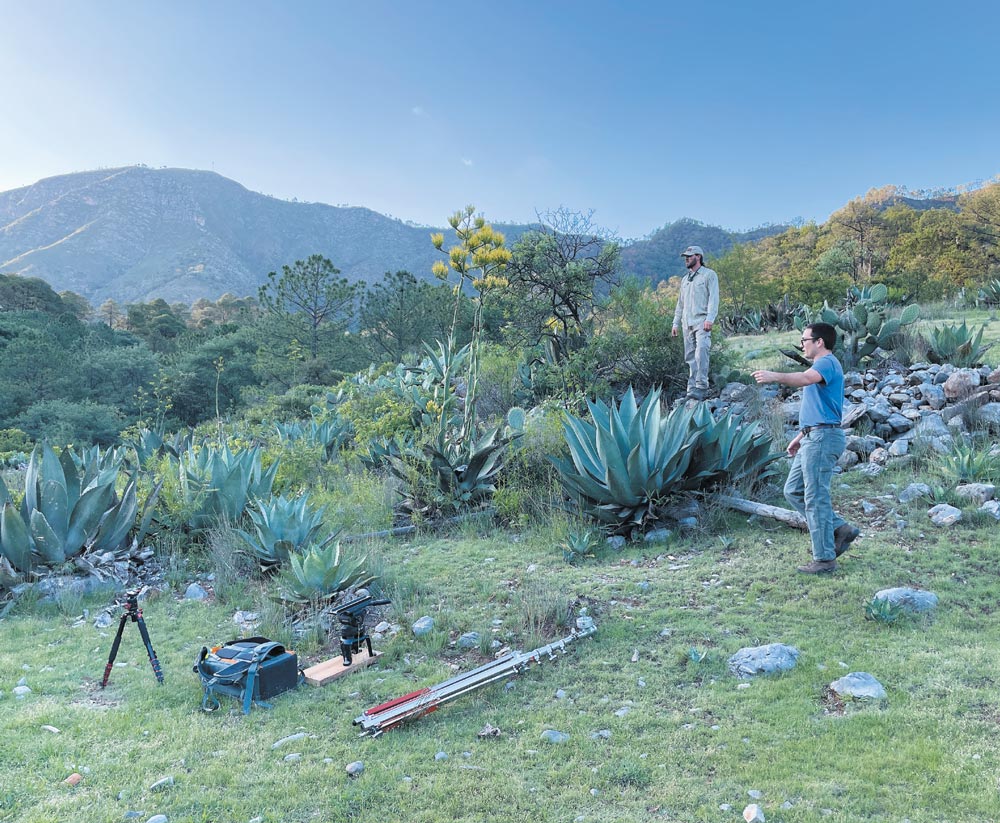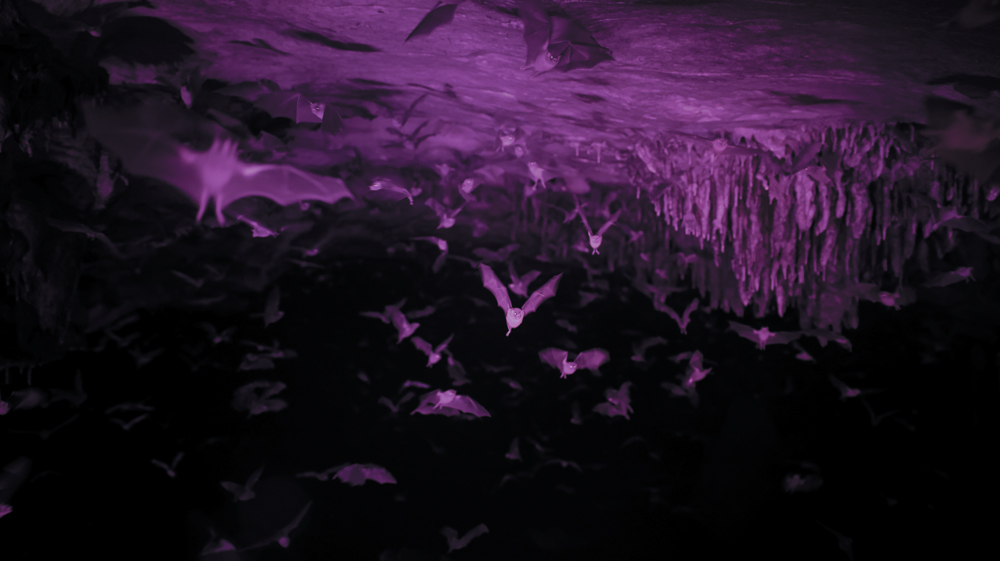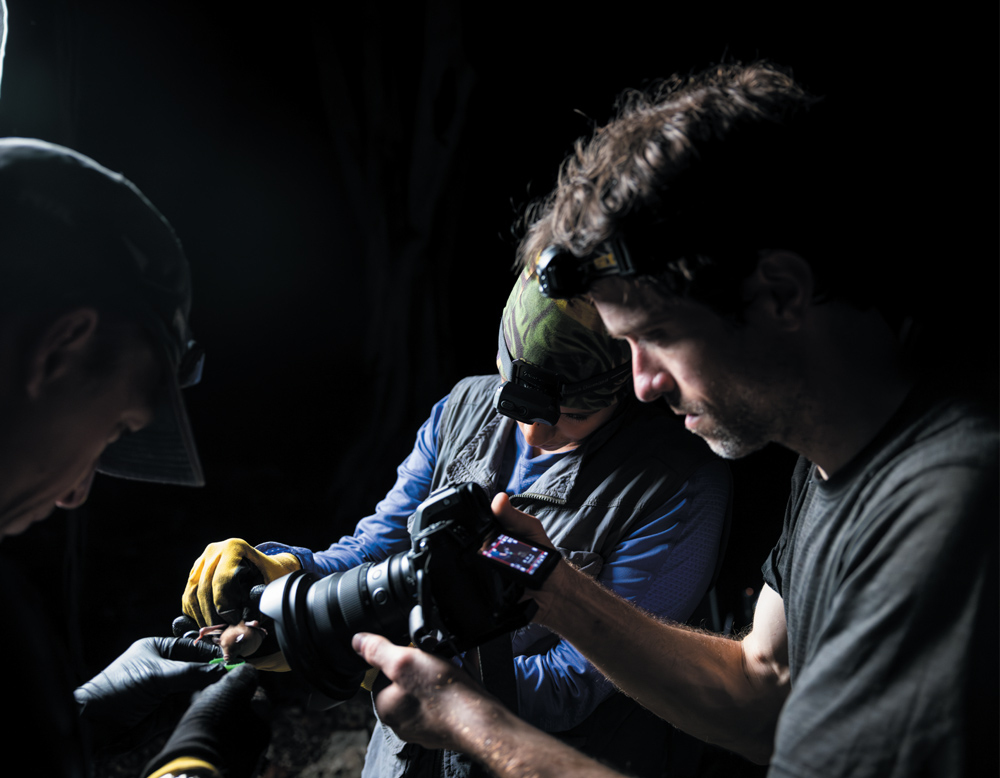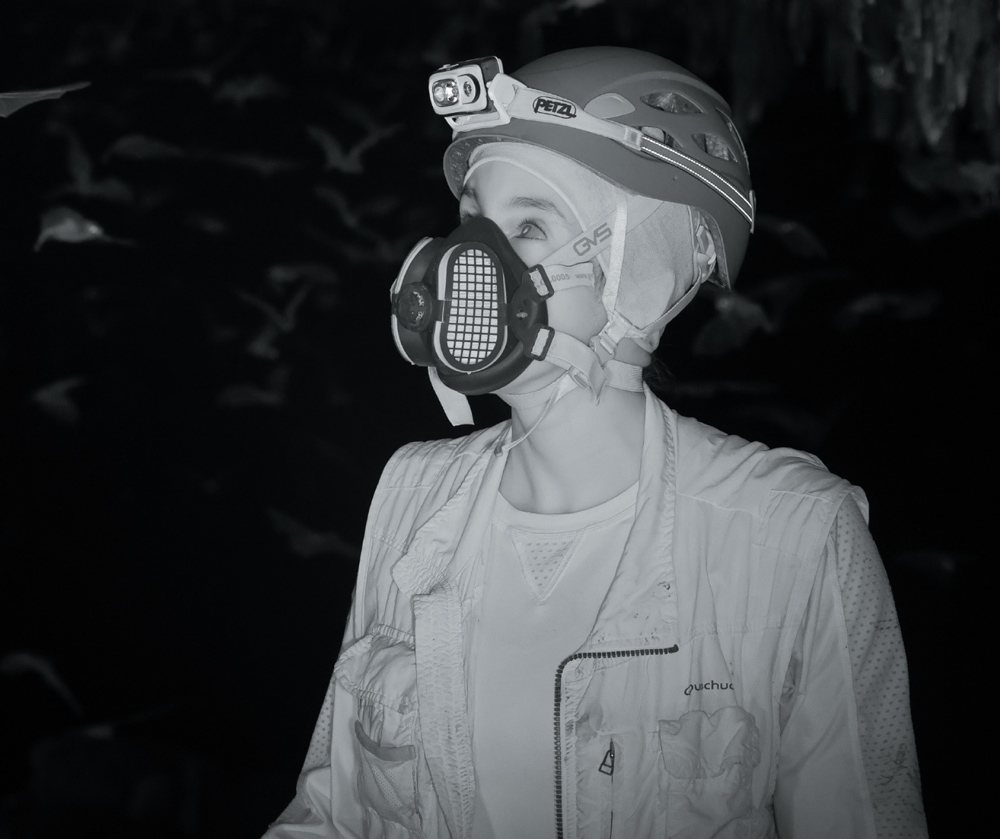On Location: Filming Bats Around the World

On Location: Filming Bats Around the World

n April, Melquisedec Gamba-Rios, Ph.D., and Jennifer Barros, Ph.D., placed small infrared lights in a tight tunnel-like passageway in Jamaica’s St. Clair Cave. Air temperatures outside the cave were approaching 90 degrees Fahrenheit, and humidity levels were very high. Inside, it was at least 10 degrees warmer—and wetter.
St. Clair Cave is one of the most important cave systems for bats in the Caribbean, with more than two million bats and 10 bat species, including the Critically Endangered Jamaican greater funnel-eared bats (Natalus jamaicensis). Gamba-Rios, Bat Conservation International (BCI)’s Regional Director in Latin America and the Caribbean, and Barros, BCI’s Brazil Program Manager, used infrared lights to minimize disturbing the bats and placed themselves near the bats’ exit. Soon, the bats began exiting the cave to scour the skies for insects, and look for fruit and nectar.
In this section of St. Clair Cave, more than 200,000 bats flew straight towards Gamba-Rios, who was holding an infrared video camera. The bats’ echolocation abilities prevented them from bumping into the scientists, but they came close. Hours later, Gamba-Rios and Barros exited the cave—soaked in a mixture of sweat and bat excrement. But they emerged with dramatic footage of bats in action.

Capturing conservation

“All the work is worth it. With the videos and movies, people can have a visual impression, relate more with the bats, and see the real impacts of the threats we are trying to reduce,” Barros says. “Filming is an important part of the conservation work.”
—Jon Flanders

Challenges of filming in a hot cave

On-Set Hospitality
“The setting, suggested by one of our awesome conservation partners, was perfect in all ways,” Lear says. “It shows how bat conservation works best when we get to know people in the community.”
The film series about BCI’s bi-national Agave Restoration Initiative featured conservation policymakers, NGO partners, native seed growers, and Coronado’s family-run nonprofit, which produces agave-derived spirits. This illustrates the complexity and mutualistic relationships between bats, agave, and communities.
Lear recalls she became emotional when she first saw the rough cuts of the filming project. “It’s so exciting and gratifying to see our partners recognized in these videos and to see years of hard work beautifully captured on film.”
According to Gallaway, filming at Jamaica’s Stony Hill Cave was a different experience from work in St. Clair Cave. While St. Clair Cave is remote and hard to access, Stony Hill is close to roads and homes, which is one of the reasons why the cave’s Critically Endangered Jamaican flower bat (Phyllonycteris aphylla) is at risk. A road sits less than 20 feet from the cave’s entrance. Gallaway filmed the nearby hillside neighborhoods of Jamaican-style concrete houses and partnered with an in-country drone operator to add a perspective about the proximity between humans and the cave.

—Kristen Lear
Rediscovered, yet still Endangered

The human side of BCI’s bat films
—Jennifer Barros


Flanders says films are important since they are such powerful mediums. “Film projects have the potential to connect viewers to bats and showcase the work of bat conservation in the places we work and beyond,” Flanders says. “Any way of spreading the word of our work opens doors to more understanding, more partnerships.”